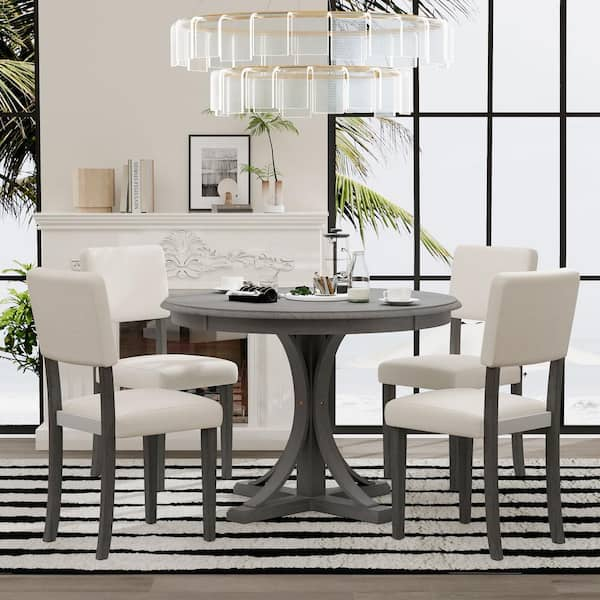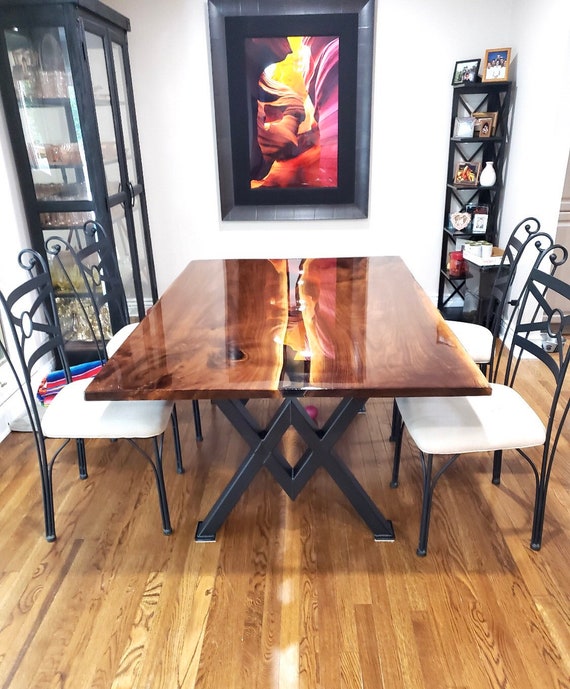The Impact of Dining Room Table Legs on Your Table's Overall Design
The Impact of Dining Room Table Legs on Your Table's Overall Design
Blog Article
From Traditional to Modern: Find the Suitable Eating Space Table Legs for Your Design
The choice of dining room table legs plays a pivotal role in specifying the overall character of your space, connecting the gap between standard craftsmanship and modern-day appearances. While timeless styles such as cabriole and transformed legs stimulate a sense of classic elegance, contemporary styles like hairpin and geometric choices provide a possibility for striking visual passion. Examining the best equilibrium between these styles needs a nuanced understanding of your existing décor and individual taste. As you consider these aspects, the question continues to be: how can you effortlessly integrate these varied leg styles to create a harmonious eating experience?
Understanding Table Leg Styles
The selection of dining-room table leg styles can significantly influence both the appearances and functionality of the space. Each leg style contributes unique aesthetic components and practical functions, catering to varied style preferences and usage requirements. Recognizing these styles is vital for selecting the best table that aligns with your total indoor design vision.
For example, conical legs provide a tidy, traditional appearance that can enhance a space's elegance, while pedestal bases supply security and take full advantage of legroom, making them ideal for smaller spaces. Hairpin legs, a hallmark of mid-century modern design, introduce a commercial panache, allowing for a ventilated, open feeling. Trestle legs stimulate rustic charm, supplying durable assistance and a feeling of timelessness.
Moreover, the option of products plays a significant role. Wood legs can bring heat and structure, whereas steel choices frequently share a smooth, contemporary ambiance. Ultimately, comprehending table leg styles is vital for developing a natural eating area that reflects individual design while making certain practicality and convenience. By thoughtfully thinking about these elements, you can improve both the useful and aesthetic appeal of your dining space.
Traditional Table Leg Options
When selecting dining-room table legs, traditional options usually symbolize classic elegance and workmanship. These designs mirror an abundant heritage and a commitment to quality, making them ideal for those who value classic looks.
Among one of the most renowned standard leg designs is the cabriole leg, identified by its stylish rounded shape. This layout often features decorative carvings and is most frequently found in Queen Anne and Chippendale furnishings. Another popular option is the transformed leg, which boasts a series of smooth, rounded shapes that offer a traditional appearance while maintaining security.
Furthermore, the straight leg, while simple, offers a unadorned and sturdy framework that can mix flawlessly with a variety of tabletop styles. For those attracted to ornate describing, claw-and-ball feet legs stimulate a feeling of splendour and can function as a spectacular prime focus in any eating room.
Finally, pedestal bases, although not purely legs, supply an alternate typical alternative that enables adequate legroom and can be magnificently carved. Each of these standard leg designs adds to the total atmosphere of an eating area, weding feature with aesthetic allure.

Modern Table Leg Designs
Modern table leg layouts provide a diverse variety of designs that stress innovative materials and clean lines. These styles typically focus on functionality while acting as striking prime focus within an eating space. Minimal visual appeals are widespread, with legs crafted from materials such as steel, glass, and engineered wood, which add to a airy and contemporary feeling.
One popular layout is the barrette leg, characterized by its slender, conical structure that offers security without overwhelming the tabletop (dining room table legs). This design is typically located in mid-century modern furniture and can easily match numerous table shapes. One more fad is making use of geometric forms, where legs may handle angular or asymmetrical types, adding visual rate of interest and a touch of artistry

Blending Designs for Distinct Rooms
Frequently, homeowners look for to develop one-of-a-kind dining rooms that show their personal style by blending various style components. This method enables the consolidation of varied appearances, causing an unified yet distinctive atmosphere. As an example, coupling a rustic wooden table with sleek, contemporary steel legs can produce an eye-catching contrast that elevates the area's total charm.
Additionally, incorporating vintage table legs with modern tabletops can stimulate a sense of background while preserving a contemporary sensibility. Such mixes not only display private preference yet also urge creative thinking, enabling homeowners to curate an area that really feels both personal and welcoming.
Shade plays a critical function in this blending process; picking table legs that complement or comparison with the existing color design can boost aesthetic interest. Whitewashed legs can soften the daring of a dark table surface area, developing a balanced aesthetic.
Tips for Selecting the Right Legs
Selecting the right table legs is important for accomplishing both capability and visual allure in your eating space. Begin by considering the overall design of your room. Standard settings gain from legs that feature elaborate carvings or turned designs, while modern rooms might call for sleek, minimal styles.
Next, analyze the elevation and security of the legs. dining room table legs. Basic table range between 28 to 30 inches in elevation, so ensure the legs enhance this dimension for comfort. Additionally, robust materials, such as hardwood or steel, can enhance security and longevity
Evaluate the leg shape as well-- alternatives consist of straight, tapered, or stand styles. Straight legs offer a timeless look, while tapered legs can add a touch of elegance. browse this site Pedestal bases give enough legroom and are excellent for smaller areas.
Conclusion
In recap, picking the perfect dining space table legs needs mindful factor to consider of both modern-day and traditional designs. Standard choices such as cabriole and transformed legs use timeless beauty, while contemporary layouts like barrette and geometric shapes offer a modern touch. By harmonizing leg style, elevation, and product with the total design, a cohesive and inviting atmosphere can be attained. Ultimately, the chosen table legs need to show the wanted visual, boosting the dining experience within the space.
The range of eating space table leg styles can dramatically influence both investigate this site the appearances and performance of the area. Inevitably, recognizing table leg styles is crucial for creating a cohesive dining location that shows individual style while making certain practicality and convenience.One of the most iconic traditional leg styles is the cabriole leg, identified by its elegant curved form. Straight legs provide a timeless look, while tapered legs can add a touch of elegance.In summary, selecting the excellent eating area table legs requires cautious factor to consider of both modern-day and find more information conventional designs.
Report this page